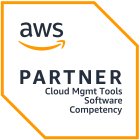
Rethinking CPU Utilization Practices
We’ve all been there—getting that phone call in the middle of the night. CPU was underprovisioned and suddenly, a spike in traffic is pushing your server towards its capacity, teetering on the brink of a crash. We’ve all been there and are all trying to avoid it at all costs. This need to never be anywhere near capacity has shaped a prevailing mindset among engineers: the necessity to overprovision. To many, maintaining a substantial buffer of resources is not merely a safety measure; it’s considered the best practice to ensure system reliability and performance.
However, this approach is increasingly coming under scrutiny. This article challenges the entrenched practice of keeping large resource buffers by default. In an era where technology has evolved to provide sophisticated, automated solutions, clinging to old habits of resource management is not only inefficient but also unnecessarily costly. It’s time to advocate for a shift in perspective, promoting a more cost-effective attitude toward resource utilization.
Dive into the article to explore how modern advancements are transforming the landscape of resource management, making it possible to maintain system resiliency without the wastefulness of overprovisioning.
The Traditional Mindset and Its Costs
For developers and DevOps engineers, there is a clear prioritization of performance above all. In many tech cultures, low CPU utilization, typically around 20-30%, is synonymous with optimal operations. This mindset stems from the desire to ensure that systems are never strained.
The belief is that the lower the utilization, the smoother and more reliable the performance, while CPU utilization levels of 70-80% are perceived as a harbinger of potential failure. Although this approach might ensure an extraordinarily high level of system reliability, it comes with a substantial price tag. Organizations often spend up to 70% of their cloud budget on resources that remain idle. It’s not just the direct costs of underutilized resources that impact the bottom line but also the opportunity cost that could otherwise be invested in innovation or strategic initiatives.
Recent technological advances have largely solved the problems of system reliability and performance at higher utilization rates, challenging the traditional views on optimal CPU usage. The primary challenge now is overcoming the psychological barriers within the engineering teams. With modern advancements, we need to adjust our mindset to trust and fully leverage these technologies, embracing higher utilization as not only safe but optimal.
Technological Advancements in Resource Management
Modern technologies, particularly automated and machine-learning systems, are transforming the landscape of resource management. These innovations allow for more precise and efficient utilization of resources, ensuring optimal performance and cost-efficiency without compromising system reliability. An example of this can be seen in platforms like Zesty Kompass, which rapidly activates nodes based on real-time data, thereby eliminating the need for maintaining large resource buffers. Leveraging these technologies allows users to only use the resources they need, when they need them, rather than preparing for the worst at all times.
That means that today, rather than adhering to traditional thresholds of 30% utilization for scaling up resources, users can safely raise this threshold to 70% or more. This change would optimize resource use by focusing on scaling resources only during actual demand spikes rather than maintaining unnecessarily high levels of capacity. By adopting this strategy, organizations can minimize costs and enhance system responsiveness, leveraging technological capabilities to better meet modern business demands.
Overcoming Resistance and Embracing Change
Changing to more cost-efficient practices often meets resistance due to deep-rooted cultural and psychological barriers. Many teams equate resource abundance with safety, making them hesitant to adopt practices that reduce these buffers. Overcoming this requires demonstrating the benefits of new practices and addressing the fears associated with change.
However, it’s important to note that the landscape is changing with or without our consent. For instance, the role of DevOps engineers is shifting towards greater accountability for resource costs. The need for more cost-effective practices is imminent and the faster we will adjust, the smoother this change will be.
DevOps teams are naturally performance-oriented and prefer to deal with their resource costs as little as possible. This inclination leads to a common practice of periodic cost-reduction projects, rather than ongoing maintenance. These projects are time-consuming and a burden, happening only when at the finance team’s request, and often divert from strategic tasks. Introducing automation tools transforms this by integrating cost-efficient practices into daily workflows, breaking the cycle of emergency cost-cutting. This shift not only aligns with financial goals but also enhances the strategic role of DevOps, enabling decisions that positively impact both performance and the bottom line.
Embracing Efficiency for Future Growth
As cloud service expenses continue to rise, adopting more efficient practices becomes crucial, not just for cost-saving but for ensuring operational viability and growth. We encourage developers and DevOps engineers to embrace innovative practices that align cost efficiency with high performance, utilizing modern technologies to enhance operational effectiveness without compromising system reliability. Consider how the latest advancements in technology can transform your resource management.
If you’re ready to see how Zesty’s automated optimization platform, Zesty Kompass, can revolutionize your Kubernetes optimization and significantly reduce costs, click the link and book a demo.








